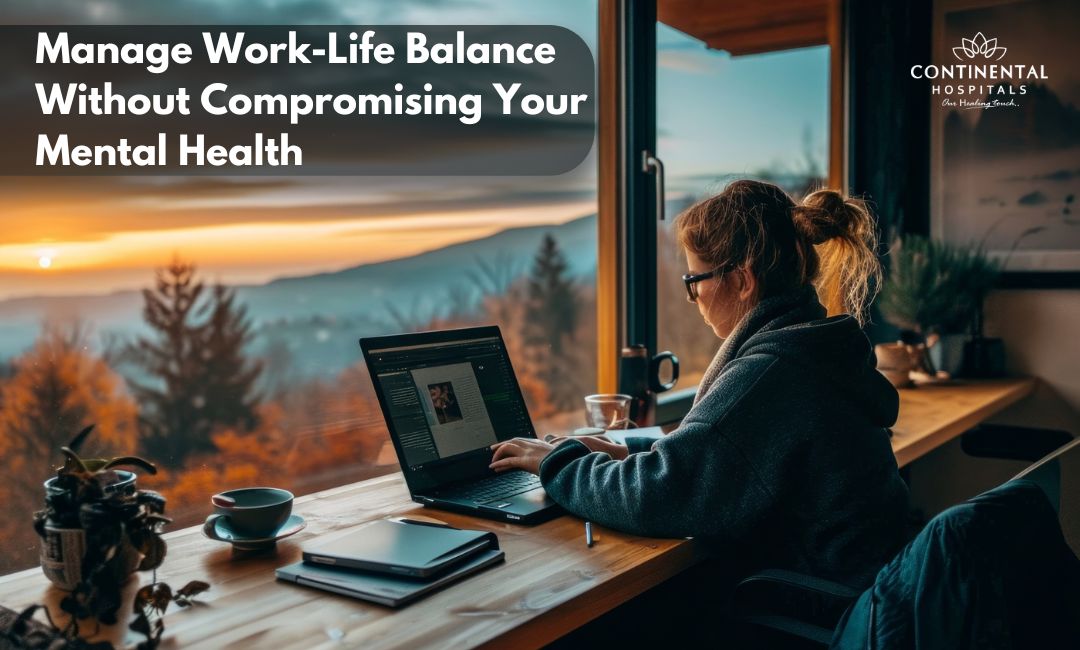Achieving a work-life balance is essential in today’s fast-paced world, where the lines between personal and professional life often blur. The ability to juggle work responsibilities while maintaining mental health is a challenge faced by many. This blog explores how you can manage your work-life balance without compromising your mental well-being, offering practical tips and strategies to live a more balanced, fulfilling life.
Understanding the Importance of Work-Life Balance
Work-life balance refers to the equilibrium between the demands of your job and the needs of your personal life. When you achieve this balance, you can enjoy a fulfilling personal life while effectively managing your career. A healthy work-life balance is essential for your mental well-being, as it reduces stress, improves mood, and enhances overall job satisfaction. It allows you to maintain relationships, pursue hobbies, and take care of your health.
The Importance of Mental Health
Mental health is just as important as physical health. It affects how you think, feel, and act. When you're mentally healthy, you're better equipped to handle stress, build relationships, and make healthy choices.
Recognize the Signs of Stress and Burnout
The first step toward managing work-life balance is to recognize when you’re feeling overwhelmed. Some common signs of stress and burnout include:
- Physical Symptoms: Frequent headaches, fatigue, or digestive issues.
- Emotional Signs: Increased irritability, anxiety, or feelings of hopelessness.
- Behavioral Changes: Social withdrawal, procrastination, or changes in eating habits.
Being aware of these symptoms allows you to address them early, preventing further deterioration of your mental health.
Tips for Managing Work-Life Balance Without Compromising Your Mental Health
Set Realistic Goals and Prioritize Tasks
Setting realistic goals is crucial for maintaining a balanced life. Start by breaking down your tasks into smaller, manageable goals. Use the SMART criteria—Specific, Measurable, Achievable, Relevant, and Time-bound—to help you define your objectives clearly.
Prioritizing tasks is equally important. Identify what needs immediate attention and what can wait. Tools like to-do lists or digital task managers can help you stay organized and focused. Remember, it’s okay to say no to additional responsibilities if they threaten your well-being.
Establish Healthy Boundaries
Creating boundaries is essential for a healthy work-life balance. Clearly define when your workday starts and ends, and communicate these boundaries to your colleagues and supervisors. Avoid checking work emails or messages during personal time, as this can blur the lines between work and leisure.
Additionally, consider setting boundaries regarding the amount of overtime you’re willing to work. Your time outside of work is valuable and should be protected to ensure you have time for relaxation and family.
Take Regular Breaks
Taking regular breaks is vital for maintaining productivity and mental clarity. When you work for extended periods without a break, your focus and energy can dwindle. Implement the Pomodoro Technique, where you work for 25 minutes and then take a 5-minute break. After completing four cycles, take a longer break of 15-30 minutes.
During breaks, step away from your workspace. Engage in activities that rejuvenate you, such as stretching, going for a short walk, or practicing deep breathing exercises. These moments of rest can significantly boost your overall well-being.
Create a Comfortable Work Environment
Your workspace plays a significant role in your productivity and mental health. A comfortable and organized environment can enhance focus and reduce stress. Here are some tips to improve your work environment:
- Ergonomic Furniture: Invest in a comfortable chair and desk to prevent physical strain.
- Declutter: Keep your workspace tidy to minimize distractions.
- Personal Touches: Add personal items like plants or photos that make you feel good.
A pleasant work environment can contribute positively to your mental health and help you feel more motivated.
Stay Connected with Colleagues
Social connections are vital for mental well-being. Maintaining relationships with colleagues can create a support system that helps you navigate work-related challenges. Schedule regular catch-ups, whether through video calls, team meetings, or casual coffee breaks.
Engaging in team-building activities can also foster camaraderie and make the workplace more enjoyable. A supportive work culture can enhance job satisfaction and reduce feelings of isolation.
Practice Mindfulness and Stress-Reduction Techniques
Mindfulness involves being present in the moment and can significantly reduce stress. Incorporate mindfulness techniques into your daily routine, such as:
- Meditation: Spend a few minutes each day practicing meditation or deep breathing exercises.
- Yoga: Engage in yoga to improve flexibility and relieve stress.
- Journaling: Write down your thoughts and feelings to process emotions and gain clarity.
These techniques can help you stay grounded and manage stress more effectively, contributing to a healthier work-life balance.
Seek Professional Support When Needed
If you find it challenging to manage stress or achieve work-life balance on your own, don’t hesitate to seek professional support. Mental health professionals can provide guidance and coping strategies tailored to your needs. Many workplaces offer employee assistance programs (EAPs) that provide access to counseling and support services.
Remember, seeking help is a sign of strength, and prioritizing your mental health is essential for long-term well-being.
Prioritize Physical Health
Physical health is closely linked to mental health. Make it a priority to engage in regular physical activity, maintain a balanced diet, and get enough sleep. Here are some tips to enhance your physical health:
- Exercise: Aim for at least 30 minutes of moderate exercise most days of the week. Activities like walking, jogging, or dancing can boost your mood and energy levels.
- Healthy Eating: Focus on a balanced diet rich in fruits, vegetables, whole grains, and lean proteins. Avoid excessive caffeine and sugar, as they can contribute to anxiety and mood swings.
- Sleep Hygiene: Establish a regular sleep schedule and create a restful environment to improve your sleep quality.
Taking care of your physical health will positively impact your mental well-being, allowing you to manage stress more effectively.
Conclusion
Achieving a healthy work-life balance is essential for maintaining your mental health in today’s demanding world. By recognizing the signs of stress, setting realistic goals, establishing boundaries, and prioritizing self-care, you can create a more balanced life. Remember, it’s a continuous journey that requires regular check-ins and adjustments. Take the time to invest in your mental health, and you’ll reap the rewards in both your personal and professional life.
Related Blog Article-
.webp)














